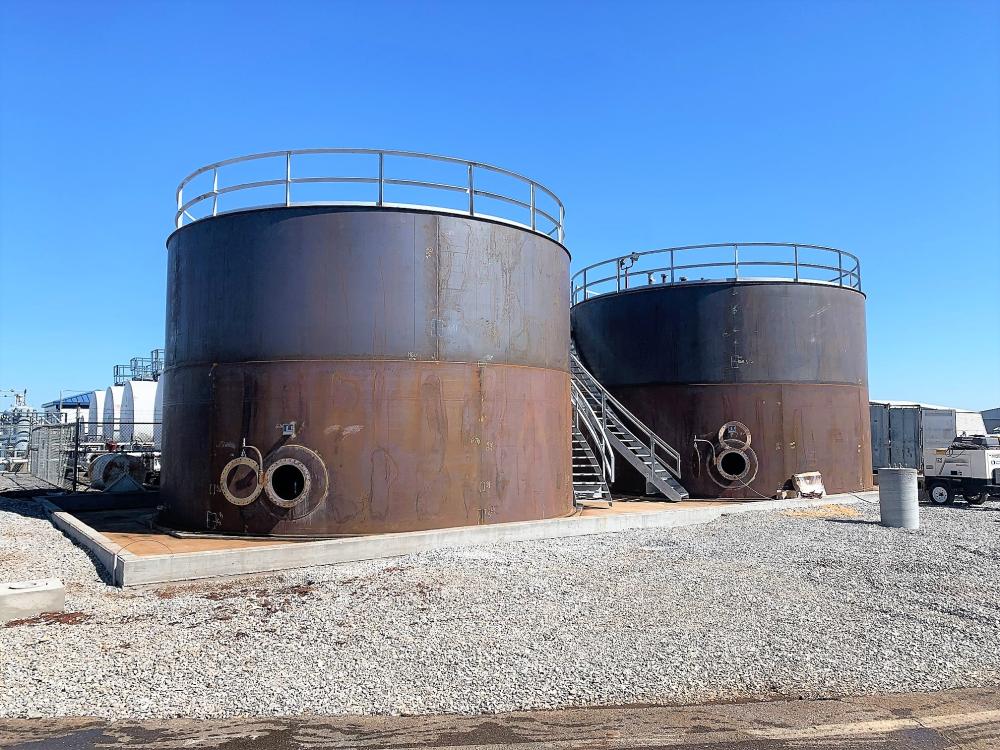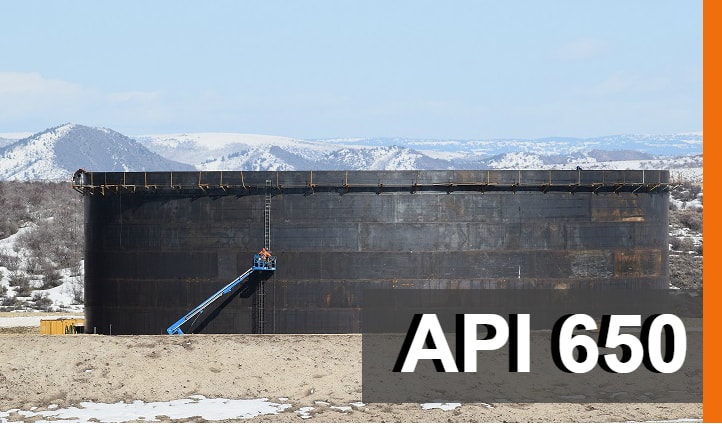State-of-the-Art Techniques Used in API 650 Welding Inspection for Enhanced Quality
How Welding Examination Functions: A Comprehensive Guide for Professionals
Welding inspection plays an essential duty in ensuring the security and dependability of welded frameworks. It involves a systematic method that consists of both aesthetic inspection and advanced testing techniques. Experts need to familiarize themselves with essential standards and policies regulating the market. Comprehending the typical defects that can emerge during welding is crucial. This overview will explore these aspects thoroughly, offering insights right into the procedures that maintain high quality and stability in welding.
Comprehending the Value of Welding Examination
While many might ignore the value of welding examination, it plays a necessary role in guaranteeing the stability and safety of bonded structures. Reliable welding inspection recognizes potential flaws and flaws that can compromise structural toughness and result in devastating failures. The examination process incorporates numerous techniques, such as aesthetic exams, ultrasonic testing, and radiographic analyses, each contributing to the total examination of weld quality.
In addition to protecting the structural stability, welding examination assures compliance with market standards and customer requirements. By guaranteeing that welds fulfill called for characteristics and tolerances, inspections help keep the integrity and long life of components in different applications, from building to aerospace. A strenuous evaluation process fosters a culture of high quality and accountability amongst welders and suppliers. Ultimately, welding examination is not simply a procedural step; it is an essential practice that underpins the safety and security and performance of crafted systems across diverse fields.
Trick Criteria and Rules in Welding Assessment
The structure of effective welding assessment hinges on adherence to established guidelines and standards. Various organizations, such as the American Welding Culture (AWS) and the American National Standards Institute (ANSI), stated standards that ensure quality and safety in welding techniques. Secret standards, such as AWS D1.1 for structural welding and ASME Section IX for stress vessels, offer extensive requirements for welding qualifications, examinations, and treatments. Regulatory structures, including those from the Occupational Safety And Security and Health And Wellness Administration (OSHA), required safety techniques and employee protections in welding environments. Compliance with these criteria is important for achieving regular weld quality and reducing the threat of failings. Furthermore, worldwide requirements like ISO 3834 further boost worldwide uniformity in welding inspection techniques. Experts have to stay notified regarding these policies to assure that their examination techniques line up with industry assumptions and lawful needs, therefore securing both employees and structural integrity.
Initial Prep Work and Aesthetic Evaluation Techniques

Reliable welding examination starts with a comprehensive pre-inspection list that ensures all needed conditions are met before the real examination occurs. Following this preparation, visual defect recognition plays a necessary duty in evaluating weld quality, permitting inspectors to find issues such as splits or improper blend. With each other, these methods create the foundation for an effective welding inspection procedure.
Pre-Inspection Checklist
Before starting any kind of welding inspection, a thorough pre-inspection list is important to guarantee that all needed prep work are finished which aesthetic inspection techniques are successfully employed. Trick components of this list include confirming the welding treatment specification (WPS), ensuring all equipment is calibrated and in good working condition, and confirming that the assessor possesses the needed accreditations. Furthermore, it is vital to evaluate any kind of previous evaluation reports and to analyze the work setting for security risks. The inspector should also confirm that all appropriate paperwork, such as material certifications and examination documents, is easily offered. Completing this list aids to establish a solid foundation for a successful evaluation process, boosting the integrity of the results gotten.
Visual Defect Identification
An effective aesthetic problem identification process starts with careful first prep work and the application of established aesthetic evaluation strategies. Examiners must guarantee that the welding location is well-lit my latest blog post and tidy, as sufficient exposure is essential for detecting defects. A thorough exam of the weld joint's surface permits the identification of discontinuities, such as cracks, damages, or porosity. Examiners often use devices like amplifying glasses or mirrors to boost their view of hard-to-reach areas. In addition, they need to be acquainted with the specific welding standards and standards appropriate to the task. By sticking to these methods, inspectors can effectively recognize potential concerns, protecting the integrity of the weld and compliance with industry requirements.
Non-Destructive Testing Approaches: A Review
Non-destructive screening (NDT) approaches play an essential role in the welding inspection procedure by making certain the integrity and dependability of welded frameworks without triggering any type of damages (API 650 Welding Inspection). These strategies permit examiners to evaluate the quality of welds while preserving the elements being checked out. Common NDT techniques consist of ultrasonic testing, radiographic screening, magnetic particle testing, and dye penetrant screening, each offering distinct benefits
Ultrasonic testing utilizes high-frequency audio waves to discover inner defects, while radiographic testing makes use of X-rays or gamma rays to visualize the internal structure of welds. Magnetic bit screening discloses surface and near-surface issues by applying a magnetic area and iron particles to the weld area. Dye penetrant testing highlights surface-breaking problems via the application of a tinted color. With each other, these NDT read the article approaches provide crucial understandings into weld high quality, making it possible for specialists to make educated decisions regarding safety and security and conformity in welding applications.
Usual Problems and Their Ramifications
Identifying usual problems in bonded joints is crucial for preserving architectural stability and safety. Numerous issues can arise throughout the welding process, each lugging prospective ramifications for the general efficiency of the framework. Porosity, identified by little gas pockets within the weld, can damage the joint and jeopardize its load-bearing capacity. Fractures might develop as a result of thermal stress or inappropriate air conditioning, bring about prospective failure under stress and anxiety. Incomplete blend happens when the weld steel does not totally bond with the base product, resulting in weak joints that may not endure designated tons. Undercutting, where the base metal is eroded, can likewise minimize the effective cross-section of the weld. Additionally, too much support can produce stress concentrations that might bring about failure. Identifying these defects promptly enables restorative procedures, making sure the long life and reliability of bonded frameworks in important applications.
Devices and Devices Utilized in Welding Evaluation
Efficient welding inspection depends on a range of specialized devices and tools to guarantee the top quality and honesty of welded joints. Essential instruments include aesthetic evaluation devices, such as magnifying glasses and borescopes, which enable inspectors to very closely check out welds for surface defects. Non-destructive screening (NDT) methods, such as ultrasonic testing, radiographic screening, and magnetic particle testing, are basic for recognizing internal flaws without harming the product.
Dimension devices, including calipers and weld determines, aid establish and analyze dimensions conformity with specifications. In addition, firmness testers review the mechanical properties of welded joints. Personal safety devices (PPE) is likewise imperative, protecting the safety and security of inspectors while operating in possibly harmful atmospheres (API 650 Welding Inspection). Each tool offers a specific objective, jointly enhancing the performance of welding inspection and contributing to the dependability of completed projects
Frequently Asked Questions
What Qualifications Are Required to End Up Being a Welding Examiner?
To end up being a welding inspector, people generally require appropriate accreditations, such as AWS CWI or CSWIP, along with experience in welding procedures, design principles, and expertise of assessment methods, security standards, and relevant codes.
How Commonly Should Welding Inspections Be Performed?
Welding assessments ought to be conducted routinely, preferably at various task stages, including pre-weld, during-weld, and post-weld. Frequency might additionally depend upon industry requirements, project specs, and the complexity of the welds entailed.
Can Welding Defects Be Repaired After Evaluation?

Yes, welding problems can commonly be fixed after assessment. Depending upon the extent and kind of flaw, appropriate approaches such as revamping or added welding may be utilized to bring back architectural honesty and safety and security compliance.
What Industries Require Routine Welding Evaluations?

Different sectors, consisting of building and construction, production, aerospace, and auto, call for normal welding evaluations - API 650 Welding Inspection. These evaluations ensure adherence to security criteria and quality assurance, reducing risks associated with architectural honesty and functional performance in welded parts
Exactly how Do I Select a Welding Evaluation Service?
To choose a welding evaluation service, one should consider credentials, experience, certifications, and sector track record. Additionally, assessing customer testimonials and ensuring the solution fulfills appropriate standards can aid assure quality examinations and trustworthy results.

While many might underestimate the significance of welding inspection, it plays a necessary duty in guaranteeing the this link integrity and safety and security of welded structures. Trick criteria, such as AWS D1.1 for structural welding and ASME Area IX for pressure vessels, give comprehensive requirements for welding qualifications, inspections, and treatments. Effective welding assessment begins with an extensive pre-inspection checklist that ensures all required problems are fulfilled prior to the real evaluation takes area. Prior to beginning any type of welding assessment, a thorough pre-inspection list is essential to guarantee that all needed preparations are completed and that visual examination methods are properly utilized. Non-destructive testing (NDT) methods play an essential function in the welding inspection process by guaranteeing the honesty and integrity of bonded frameworks without triggering any damages.